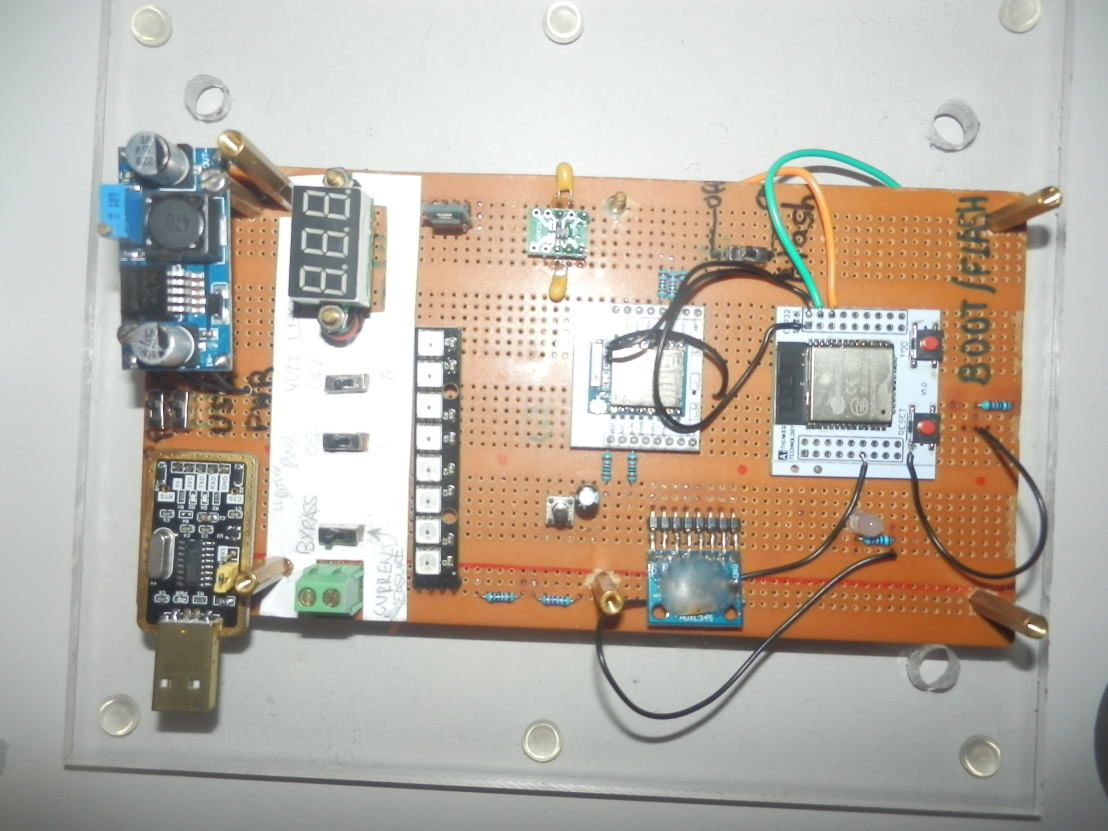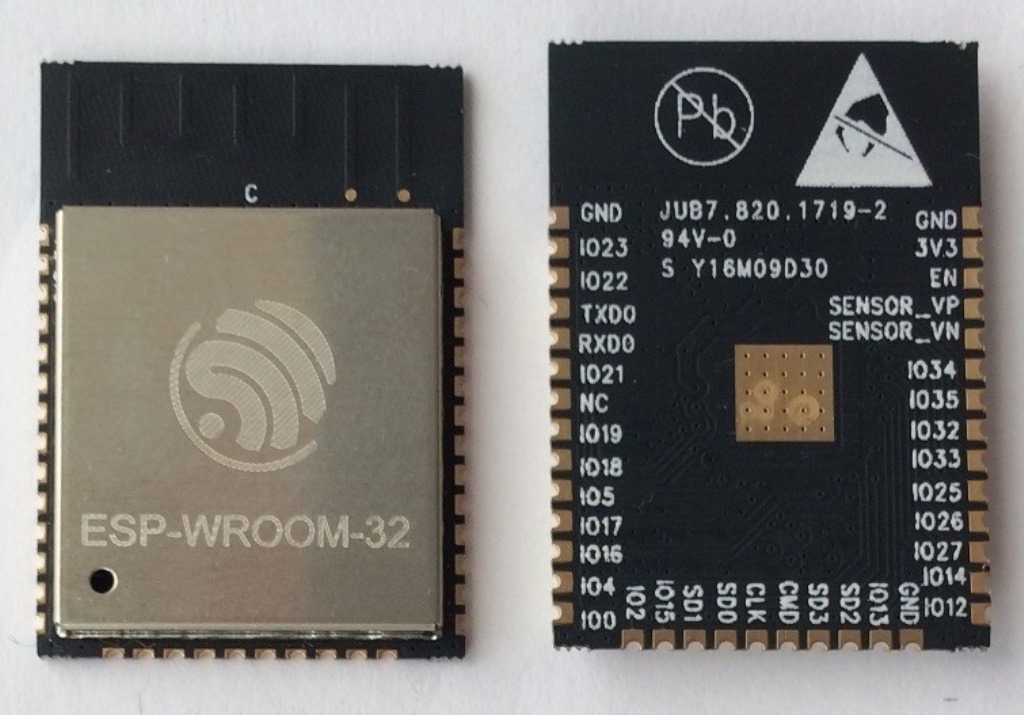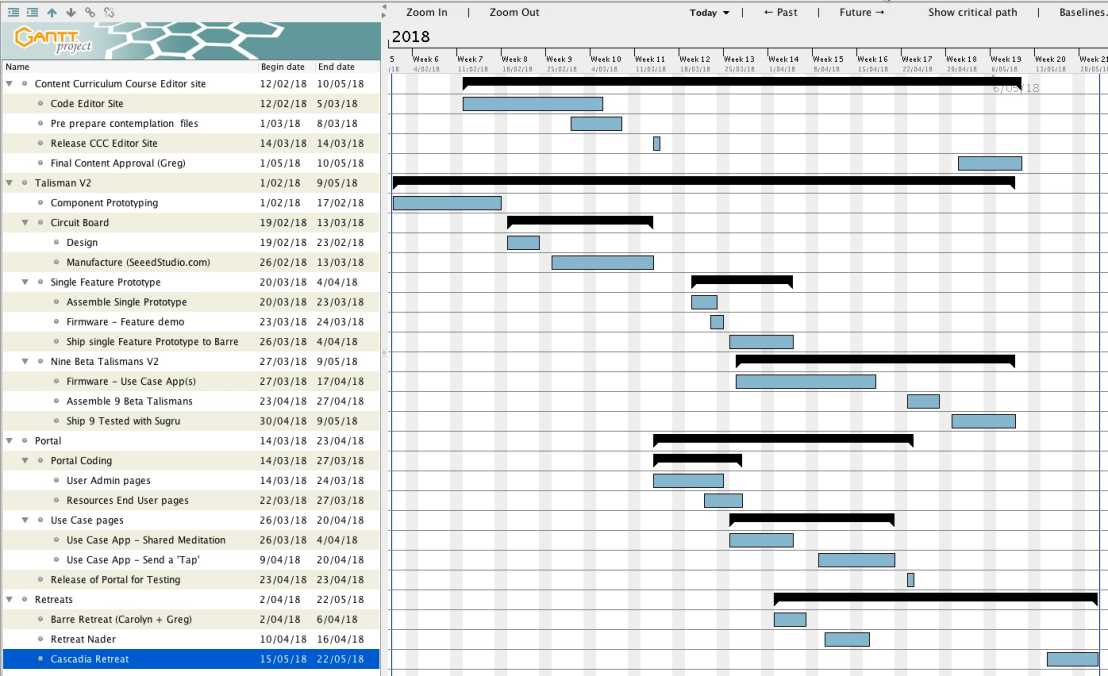The new central processing unit (CPU) that will power the Talisman V2 is up and running! Yeah, whoop, whoop. This is significant because it implies / proves that ‘we have the technology’ (sorted) to wire up power to the chip, communicate to it in order to load an initial trivial program.
So it is now possible (for me) to use the new dual core CPU. With this first most basic of programs working, it is possible to move on with success adding more interesting programs.
In short, the rest of the firmware on the Talisman is just more of the same of this first program, whereas getting the first program required all the configuration, code editor program setup, coding language , compiler and other geekery.

This image shows a hand wired prototype that is used to confirm all electronic components. Of most interest is the right hand side white square with the two red push buttons. On this white square the WiFi radio module (with dual core CPU) can be seen within the right hand side white area. It is the metal covered square with the tall black square on it’s left. Actual size 1 inch wide.
In the centre of this photo is another smaller white square with a single core, slower less powerful WiFi module. This is not being used, since the more powerful dual core module is now working.
The other component of note is the new upgraded power regulator, also wired up and working to power the circuit. This can be seen on the small green square board with the two tan circular ‘lentil’ looking components towards the top row of the photo. The actual power regulator is the tiny small black rectangle in the middle of the green square.
The remaining components have all been wired up and used successfully on the previous V1 Talisman. The next task is to programming the new WiFi radio module with the dual core CPUs to communicate to the previously used components. (vibration motor, accelerometer, LEDs, battery charger.) Once this component confirmation is completed, the components can be arranged to fit on a printed circuit board with their tested wiring.



